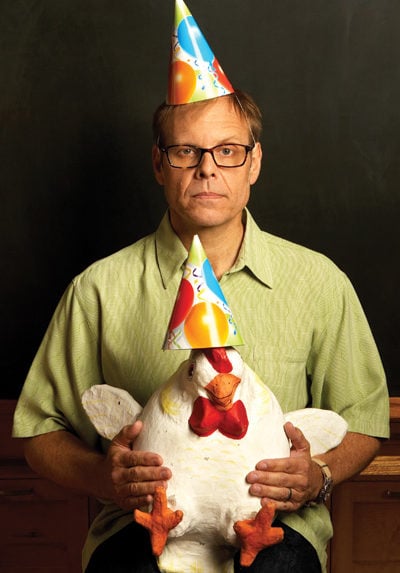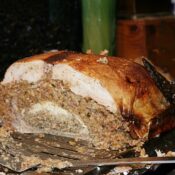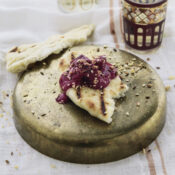Alton Brown is a ______________
A) food scientist
B) filmmaker
C) pilot
D) television host
E) all of the above
He’s the man in front of the camera and behind the scenes of the Food Network’s long-running television series Good Eats, a show dedicated to exploring the history and science of food. Network fans also know him as the host of Iron Chef America and the documentary series Feasting on Asphalt and Feasting on Waves. Brown is the author of the James Beard Foundation Award-winning cookbook I’m Just Here for the Food,and when he’s not writing, directing, experimenting, hosting, or filming, look up … you just might spot him piloting through America’s spacious skies (and possibly doing a little research for an upcoming series).
So, if you answered E, you are correct. However, above all, he considers himself a filmmaker, investing the majority of his time in “the one thing I get my feelings hurt by if people don’t mention” — Good Eats, now celebrating its 10th anniversary on air.
With show titles such as “What’s Up Duck?” and “Flap Jack Do It Again,” each episode is a humorous exploration of the origins of food. Paired with playful skits and unconventional cooking demonstrations, Brown won over audiences by inventing a show that’s not your run-of-the-mill cooking program.
In the spirit of the Post’s “American Ingenuity” issue, we caught up with the Food Network’s celebrity pioneer filmmaker to discover the formula for making Good Eats.
SEP: Why the fascination with food science on your show?
AB: Everything that happens in the kitchen has to do with science. In a way, everything in life has to do with science, and if you want to take control in the kitchen and be self-reliant, you really have to understand what’s going on. My particular conduit for that is science. It’s not enough to know that something works, you have to know why.
SEP: Is there something you’re most proud of for having figured out on the show?
AB: My beef jerky rig. I figured out the problem with beef jerky: It all tasted cooked, and real beef jerky is not cooked — it’s dried. So I got a few furnace filters, bungee-corded them to a box fan with a brine-marinated meat sandwiched between the filters, and used it to make really great beef jerky. Looking outside of the standard apparatus for figuring out how to do that was very satisfying.
SEP: What’s your favorite cooking innovation?
AB: The immersion circulator: the adaptation of a digitally controlled laboratory device into a culinary device. It gives people (who are willing to drop $900 on basically a water heater) the ability to dial in exact temperatures. I can cook spare ribs at a very low temperature for nearly 40 hours, opening up a new dimension of texture and flavors.
Recipe: Alton Brown’s Eggplant Pasta
Become a Saturday Evening Post member and enjoy unlimited access. Subscribe now



